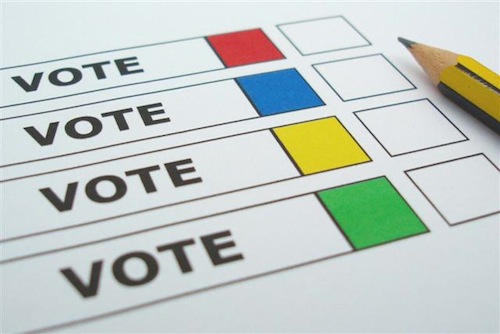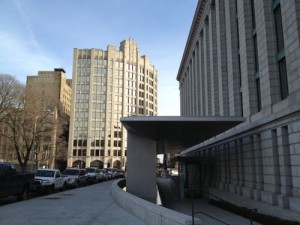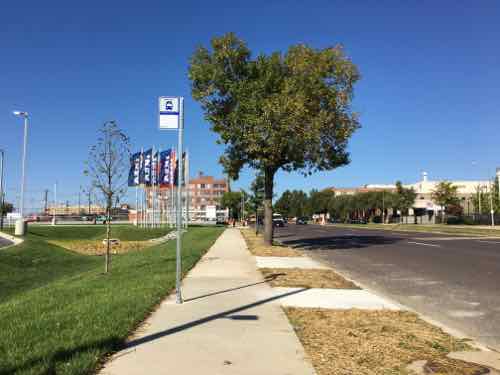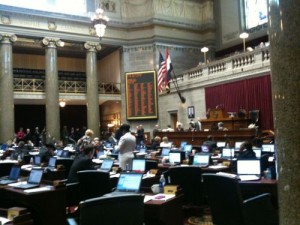Bus Rapid Transit Research Trip, Funding Assistance Still Needed
Later this week I’ll arrive in Cleveland — my first time in that city — I think. My 2006 bus trip to Toronto may have routed through Cleveland. I do know I’ve never explored the city. My purpose for visiting it to ride their Bus Rapid Transit (BRT) lines — the HealthLine and 55-A-B-C: Cleveland State Line. We’ll spend just over 48 hours in Cleveland, our hotel is located on the HealthLine.
Cleveland has many similarities to St. Louis — such as losing more than half its peak 1950 population. Pollution was a problem, in 1969 the Cuyahoga River caught on fire! Earlier this year, Cleveland police agreed to train officers to minimize racial bias and the use of excessive force.
A few months ago I started a GoFundMe page to raise money for this 2-day research trip to Cleveland. So far I’ve raised $200 of the $375 needed — a little more than half.
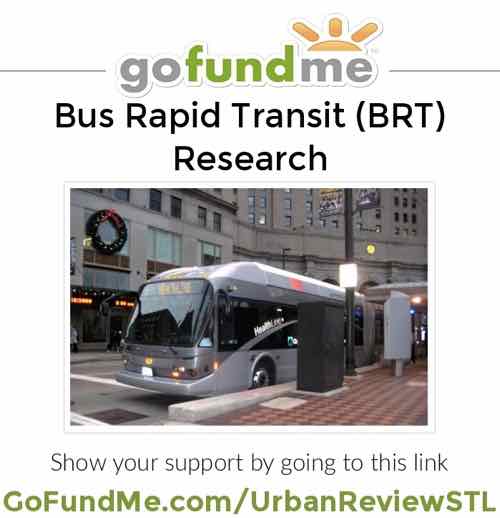
The rest of our vacation will be spent in Chicago. There I’ll check out construction on Chicago’s first BRT line — the Loop Link:
Traffic-clogging construction has been underway for almost six months on Loop Link, the Emanuel administration’s experiment intended to speed CTA buses through downtown, yet the bus rapid transit service will be launched late this year with fewer features than originally promised, officials told the Tribune.
Even before the changes that threaten to reduce the benefits of the whole endeavor to ease congestion in the central Loop, the $32 million project was labeled “BRT Lite” by some transportation experts because its design lacked several elements that are key to helping buses replicate the service reliability of rail rapid transit. Those experts said making a strong first impression was vital to winning public backing for introducing bus rapid transit citywide. (Chicago Tribune – CTA bus rapid transit service to debut with fewer bells and whistles)
Cleveland’s HealthLine was given a 76/100 score by the Institute for Transportation & Policy Development — a Silver rating — the highest score of all BRT lines in the U.S. Other countries have higher ranked BRT systems:
Of the systems scored, 15 are classified as gold, 28 as silver, 41 as bronze, and 6 as “basic” BRT, indicating a minimum of BRT features, but not quite qualifying as best practice. Eight did not qualify as BRT. Furthermore, ITDP has identified 200 additional corridors that preliminarily meet the BRT basics.
The BRT Standard is an evaluation tool for world-class bus rapid transit based on international best practices. It is also the centerpiece of a global effort by leaders in bus rapid transit design to establish a common definition of BRT and ensure that BRT systems more uniformly deliver world-class passenger experiences, significant economic benefits, and positive environmental impacts. (ITDP)
Scores of other BRT lines in the U.S.
Bronze
- Los Angeles CA (Orange line) 65/100
- San Bernardino CA (E-Street) 63/100
- Pittsburgh PA (MLK) 56/100
- Seattle WA (SODO) 56/100
- Eugene OR (Green line) 55/100
Basic
- Pittsburgh PA (West) 51/100
- Pittsburgh PA (South) 50/100
So we have no “Gold” BRT lines, and only one “Silver”. See the scoring criteria here, of interest to me is station spacing:
In a consistently built-up area, the distance between station stops optimizes at around 450 meters (1,476 ft.). Beyond this, more time is imposed on customers walking to stations than is saved by higher bus speeds. Below this distance, bus speeds will be reduced by more than the time saved with shorter walking distances. Thus, in keeping reasonably consistent with optimal station spacing, average distance between stations should not be below 0.3 km (0.2 mi.) or exceed 0.8 km (0.5 mi.).
Two-tenths to a half mile spacing sounds like excellent criteria to me, Cleveland’s HealthLine did this. It also got all three points for Pedestrian Access:
A BRT system could be extremely well-designed and functioning but if passengers cannot access it safely, it cannot achieve its goals. Good pedestrian access is imperative in BRT system design. Additionally, as a new BRT system is a good opportunity for street and public-space redesign, existing pedestrian environments along the corridor should be improved.
Regular posts will continue here during my vacation/research trip, plus I’ll be posting images from Cleveland & Chicago to Twitter & Facebook. Would love to raise the remaining $175 before the credit card bill arrives.
— Steve Patterson
